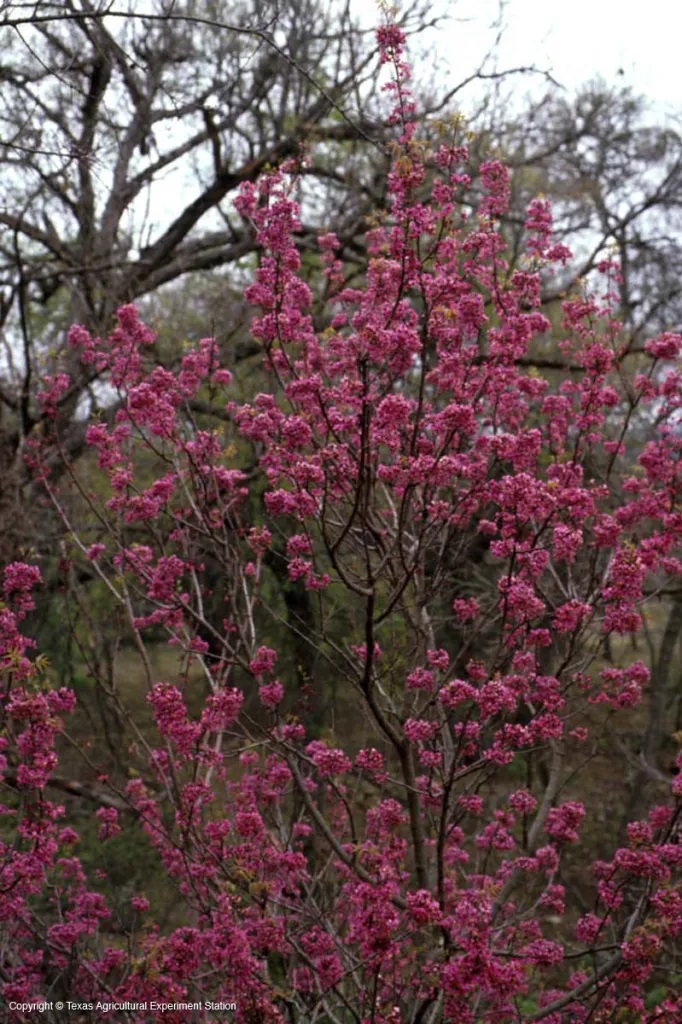NICE! Plant of the Month
(Ungnadia speciosa)

Family: Sapindaceae (Soapberry Family)
Other Common Names: Buckeye, false buckeye, monillo
Type: Rapid growing spring flowering tree (small specimen), thicket or tall shrub
Natural Habitat: From the Edwards Plateau west to the trans-Pecos and into southern New Mexico and northern Mexico
Propagation: By seed from August to October. Plant in deep pots to accommodate long central root
Deer Resistance: Listed as high, but will be browsed heavily under stressful conditions
Wildlife: Attracts butterflies and bees. Larval host for Henry’s elfin butterfly (Callophrys henrici)
Light Tolerance: Sun to part shade
Flowers: Fragrant pink to light purple first occurring in third year
Fruit: Brown to reddish brown three-lobed pod containing usually three seeds
Water Requirements: Drought-tolerant, once established, needing water only under extreme drought conditions
Soil Moisture: Allow soil to dry out between waterings
Soil Requirements: Well-drained calcareous soil, sand, loam, clay, and caliche
Availability: Readily available in many nurseries
Planting Instructions: Space plants eight feet apart, closer for a thicket or shrub effect. Dig a hole at least two times wider than, but the same depth as the root ball in the nursery container. Sides of the hole should be irregular, not smooth. Remove plant from container, taking care to support the root ball. Loosen exterior roots gently with your fingers. If the plant is root-bound and cannot be loosened by hand, the outer roots may be cut in several places. Lift the plant by the root ball and place into the hole. Backfill hole using soil that was dug out. Do not add any soil to the top of the root ball. Gently firm the soil with your hands, but do not tamp it down. Place 3-4 inches of mulch over the bare soil around, but not touching the base of the plant.
Watering Instructions: Water deeply after planting to settle soil around roots. Then every 7-10 days, as needed, during the first growing season. Before watering, check for soil moisture at a depth of an inch or two at the edge of the root ball. Skip a watering after a rainfall of ½ to 1 inch. Maintain this watering schedule until the first fall. Reduce watering during the cool fall and winter months. In a “normal” year, no watering may be necessary during the fall and winter, but during a dry period, monthly watering may be needed. Second Spring and thereafter: Water monthly only during periods of drought. Once established, natives will survive with little supplemental irrigation.
NICE! Tip: Can be planted as a small ornamental shade tree, understory tree, or as a thicket or tall shrub and does quite well given a northern exposure. The fragrant, showy spring flowers attract many useful insects including bees and butterflies, and the fall color is a spectacular bright yellow. It also provides a nesting site and shelter for several bird species. The leaves are toxic to livestock. The seed is also toxic and should not be eaten.
Look for the NICE! Plant of the Month signs and information sheets on your next visit to a participating Boerne nursery. And thank you for supporting native plants by using them in your landscapes.
